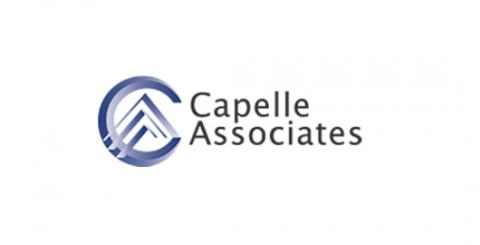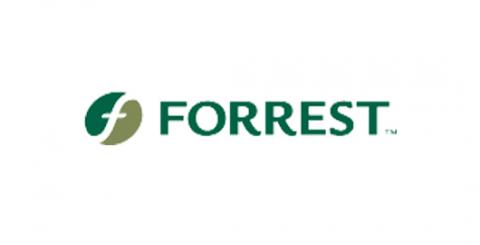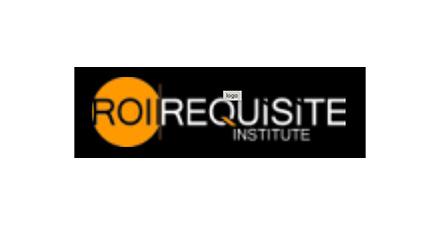
Varieties of Assessment Experience
- LPA is based on seven subtests like an assessment center tim roles, conflict handling, work style and so on. Why LPA? Reliability, convenience, flexibility. We can customize output, make role profiles and soon. That's how we transform human resources in bars and numbers.
Speaker A I promised it to my manager to talk very shortly. Few words about ourselves, few words about the process and few words about a mini case. So I'm marcos. We are instituto Pieron. Pieron is pa...
Transcript of the presentation video
NOTE: This transcript of the video was created by AI to enable Google's crawlers to search the video content. It may be expected to be only 96% accurate.
Speaker A I promised it to my manager to talk very shortly. Few words about ourselves, few words about the process and few words about a mini case. So I'm marcos. We are instituto Pieron. Pieron is part of the BIOS Network. Maybe you have heard about BIOS. BIOS is in different countries in the world. Pieron was established in 1959. Not by myself, I'm a little bit younger. And we work with BIOS since 1997. BIOS has this integrated approach to the process. Of course we work with people. We work with work and values. When we talk about assessment, we are talking about one part of the system which about people. How many of you have ever undertaking an assessment? I mean, person to person, deep conversation, hands your hand. Good. So you know, what about that? So I talk about people. But when we are talking about people, we want the experience of assessment to be meaningful. Meaningful because there's a context there. There's the work, there's the manager, there's a complexity decision to be made. There's the organization and its values. So we want the conversation to be very meaningful. When Ken invited me to talk about assessment, I thought he wanted me to talk about the ugly duck. What is it? But after these years we learned that talk about people and assessments is a good opportunity for us. All the clients we have that ask us for talk about assessment, they are non requisite organizations. So that's what I'm talking about. There are many reasons why clients or potential clients ask us for run assessments. You can see some of them that go from governance problems until hiring questions. In general, something is going wrong. And hypothesis is this about people? So they want us to discover, to find out if there an answer, if there is a solution. We think there is none. No an answer, no a solution. Because there is integrated system in place, succession planning, selection especially. We are hiring more than 50 new younger people who can be the next CEO. This is a $1 billion question answer view from outside the failure of the nine box approach. It's interesting. General Electric is not using nine box approach since seven or eight years about coaching, in and out, conflicts in a group and team building and others. There are many reasons why they come to us. The approach we take is two axis. In the horizontal axis, we look to the visible resources. Your style, your preferences, your personality, managerial traits, skills, knowledge, experience. In the vertical area, we look to the invisible resources. In general, how people are comfortable using their judgments under uncertainty and ambiguities. This is the way we differentiate our approach. In the market, we call this the commodities levels. You have hundreds of offers, but here we all can make a difference in the market. That's where we mainly position ourselves. So you know about flow, condition. Different levels of complexities will demand different competencies. When a client call us, we show this. What do you want? You want look to the virtue, to the horizontal. We do both and we differentiate that. And also we want the client to understand that there are different levels of complexity they are not looking at at the moment. And you can find different people in different conditions. Low performance, high performance, bored people, people not able to use their full capability. So we try to educate clients in thinking about people, but in a more open context. The vertical axis, the potential capability. We use the CPA approach. You see that this career path appreciation. We do not use the word assessment. We prefer to use appreciation process. Appreciation process has to do to identify value and to create value. What is CPA is an appreciative process, a semi structured deep conversation. I do some details later. It's aiming to identify current potential and mode. It takes about 3 hours of conversation. In deep conversation, feedback is offered just after the process. It's an important moment in the professional life of a person. You know, you meet this person, he has his history, he's inside the company, lots of expectation and there's a future ahead. We try to treat this in a very responsible and respectful way. YCPA regular, selected, trained practitioner, no bias of age, gender, education, culture is very interesting because it's able to identify capability in nondominant groups. This is very important scientific test used since 98 is extensive with research and high validity. So that's what CPAs looks like. See 3 hours in one slide. We have this psychological contract. It's interesting because many people that appeared in our room to take the assessment sometimes the client did not inform him about. We don't do that. Let's talk again why you're here, what's behind that. Once we start, we talk about what CPA it is, what is not. This is not a test, this is not a personality assessment, this is not a IQ test, whatever. And talk about confidentiality time, process results. Then we go starting. We talk about the current role, when I know to have a sense of the complexity, what kind of decisions the person takes. Then we go to a specific process, nine set of six phrases. We talk about different themes of work from problem solving, uncertainty, ambiguity, lack of knowledge, how people manage different situations. This takes every phrase. We're going to take 1015 minutes to run it's a deep conversation. Running the phrase cards. We're going to have an hypothesis about what level of capability we're talking about. And we're going to test this hypothesis in the whole process. There is one task with symbol cards. We like to see the problem solve style of the person has nothing to do with capability, but how he solved problems more analytical, more intuitively and so on. Then we go to the career history. We track the career history according to levels of work that help us to understand how this capability has evolved over time. And we check against our hypothesis, whether has some correlation or not. And we look to periods of flow. It's interesting when we ask when we're happy with your work people bring some lots of non verbal indications. That's interesting. Also when you are doing phrase cards people are just like John Wayne quick. We don't want that. When the person stopped, let's think tell me more. So when people really stop talking, you have a sense that we are going to the capability. It's interesting process. Then we offer the feedback, we talk about the levels. We make the person understand levels. We share our hypothesis. We do some joke. I take a piece of paper, I write my hypothesis and I ask the past where do you see? It's amazing. People have lot of self conscious about their relationship with the levels. Very interesting. But we do that because want their support to the next steps of the assessment. Because this will go to the organization. If the person is not comfortable with the results, he will not support. If we did the horizontal assessment, we share also the horizontal assessment with the person. And then we send the person report and get authorization to send the client. Just the main protocol. The person is the first one to know everything about he or she. The horizontal axis is about DLPA is one of our partner. Also what is the LPA is based on seven subtests like an assessment center tim roles, conflict handling, work style and so on. All these subtests are based on a specific theory. Why LPA? Reliability, convenience, flexibility. We can customize output, make role profiles and so on. And few tests tested. I will show you some view of the LPA. That's how we transform human resources in bars and numbers. What is LPA? Every block of those are one of the subtests. These are managerial themes default from the OPA. The task focus, people focus. The bars goes from one to nine. And here we customize the output based on managerial traits supervisory skills, self determination, achievement, initiative, performance, job success and security needs. This person. Look, I showed this person in the mini case. If I do a click here the green lines are the necessary behaviors to make this bar growth. And the red bar are the unnecessary behaviors to make this bar growth. And here's the mini case. This is a family business. We need to put attention on the greens and on the reds. It's a family business. About 50 years old. Family business. Here have business one, business two, business three. The group president is a person that worked for one of these big five consultancy companies. And four years ago he was invited to come to this company as a president because something was wrong. Remember why they call us? Something was wrong. Might be with the person. So we decided to run some assessment. What do we find? Is that these greens he brought to the company by himself but he wanted to make assessment with these people and the reds are managers related to the business what he found? This is one of the son of the family running a business partner this business. The manager was fired maybe for the same reasons of this but not part of the family. This is the business director. This is the plant manager. About the same capability and two plant managers in the middle. So what you see that is lots of some compression, some problems with the development business and we show them. Look sorry. This is your flow condition. What has happened with your organization? Nobody's in flow but I mean only the managers okay? Not all the whole people there we have people varying worry, situation anxiety, bothered on, relaxation but nobody is working really in flow condition. So this helps the client to see where and how and what he can do further. Also we show the whole team based on the LPA we can see that different traits related to high performance to put pressure to high performance was not there. And after that we presented lots of indications of what we can do now for on now. And now we start to bring this client to a requisite organization. We present the integrated principles, the importance of to understand the talent pool versus the purpose and so on, how to eliminate costs and so on. So we want these clients to really be engaged in a development organization. Thank you.

Major organizations and consulting firms that provide Requisite Organization-based services









